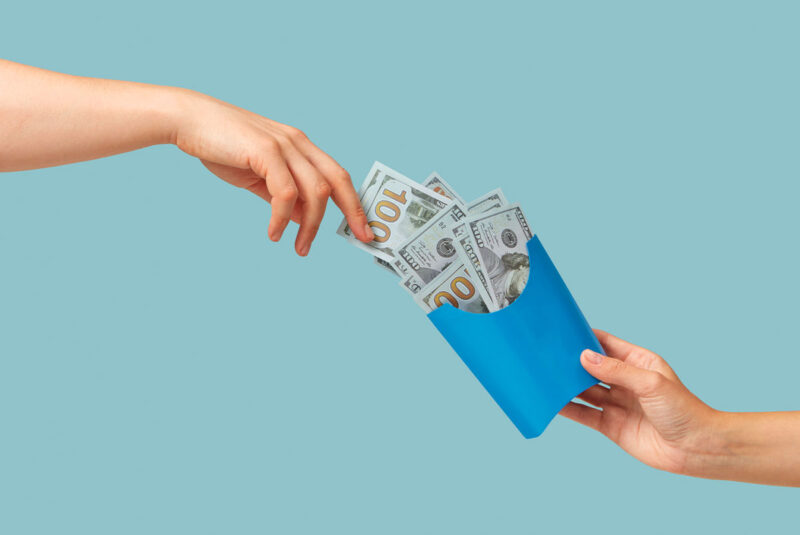Explore your mortgage options
Personal loans are one of the most flexible loan options available. The funds can be used for almost anything, and once you’re approved for the loan the money can be transferred to you quite quickly.
So, how much can you borrow? We’ll examine the common limits for personal loans and go over what factors impact how much you’ll be able to borrow.
Need Cash?
Applying for a personal loan has never been easier. Get the cash you need with competitive terms from Rocket LoansSM.
Checking your options won’t affect your credit score.
How Much Can I Get With a Personal Loan?
Typically, personal loans range from $2,000 to $45,000. The exact minimums and maximums will vary slightly by lender, but most personal loans you can find with reputable lenders will fall in this range, with some wiggle room to either side.
It’s important to understand that these ranges apply to unsecured personal loans. In other words, these ranges are common for personal loans that don’t require collateral. If you’re putting down an asset to help obtain a personal loan, that’s known as a secured loan and the maximum amount you can borrow can be higher.
High-value exceptions
It is possible to get a personal loan worth up to $100,000. However, very few lenders offer loans worth that much, and the qualification standards are strict. In addition to an excellent credit score, a high income is typically required to qualify for these abnormally large personal loans.
What Influences How Much of a Personal Loan I Can Get?
Here’s a look at the most important factors that will influence how much you’re able to borrow.
Lender
Different lenders have different minimum amounts and maximums. It’s worth taking the time to talk to multiple lenders and explore their offerings.
As a general rule, you don’t want to borrow more than you need. So if one lender offers a personal loan minimum of $2,500, and you only need $2,000, you can improve your financial position simply by finding a lender willing to offer a lower minimum.
Conversely, you can’t borrow more than the lender offers. Once you hit the maximum threshold a lender offers for personal loans, it doesn’t matter how strong your application may be, you won’t be able to qualify for a higher loan amount.
Think of the lender set ranges as the baseline. The actual amount you borrow will fall somewhere in that range based on the strength or weakness of your loan application.
Credit score
Because most personal loans are unsecured loans, your credit history and your current credit score will be very influential in how a lender processes your application.
If your credit score is too low, you will be denied the loan entirely. Even if you are approved for the loan, a lower score could subject you to higher interest rates and lower total loan values.
Debt-to-income ratio
Your debt-to-income (DTI) ratio takes into consideration your earnings and your debts. The stronger this ratio is, the more likely you are to be approved for the maximum possible loan amount.
Income
Even if you have a low (aka good) DTI ratio, your income will still be viewed as an independent factor. The higher your income, the more you can potentially afford as a monthly payment. If you are interested in qualifying for some of the exceptionally high personal loan values, a high income is more than likely to be a requirement.
Loan type
The difference between secured and unsecured personal loans essentially comes down to collateral. Putting down an asset will remove some of the risk that the lender takes on in issuing the loan.
Generally speaking, by applying for a secured personal loan you can qualify for higher loan values, longer terms and lower interest rates.
What Can You Afford To Pay Back?
One of the perks of personal loans is that they’re relatively easy to qualify for, especially compared to other types of loans like a mortgage. However, that means there’s an added responsibility on the borrower.
Taking on a personal loan means taking on debt. Before agreeing to take on debt, it’s extremely important for borrowers to make sure they can afford to pay it back according to the loan terms.
Most personal loans have terms ranging from 1 – 5 years. The shorter repayment terms combined with higher interest rates can make the monthly payments a challenge if you aren’t prepared for them.
Make sure to discuss the loan terms with your lender and go over estimates of what your monthly payment would look like with different terms. The shorter your loan term, the higher your monthly payment will be, but the more you’ll save on interest over the life of the loan.
Final Thoughts on How Much Personal Loan You Can Get
The most important factors in how much of a personal loan you can get will be the strength of your application – namely your credit score and DTI ratio – followed by the lender you choose.
Before committing to a personal loan, make sure you understand the loan terms and that you know for certain that you’ll be able to pay the loan back.
Get Prequalified for Loans from $2,000 to $45,000
Rocket LoansSM offers personal loans from $2,000 – $45,000. From debt consolidation to unexpected expenses, we’ve got you covered.
Checking your options won’t affect your credit score.
The Short Version
- Personal loans usually range from $2,000 to $45,000. The exact minimums and maximums available will vary by lender
- It’s possible to find personal loans worth up to $100,000, but very few lenders offer these and they’re difficult to qualify for, requiring an excellent credit score and a high income
- Factors that will influence how much you can borrow include the lender you choose, your credit score, debt-to-income ratio and whether the loan is secured or unsecured




